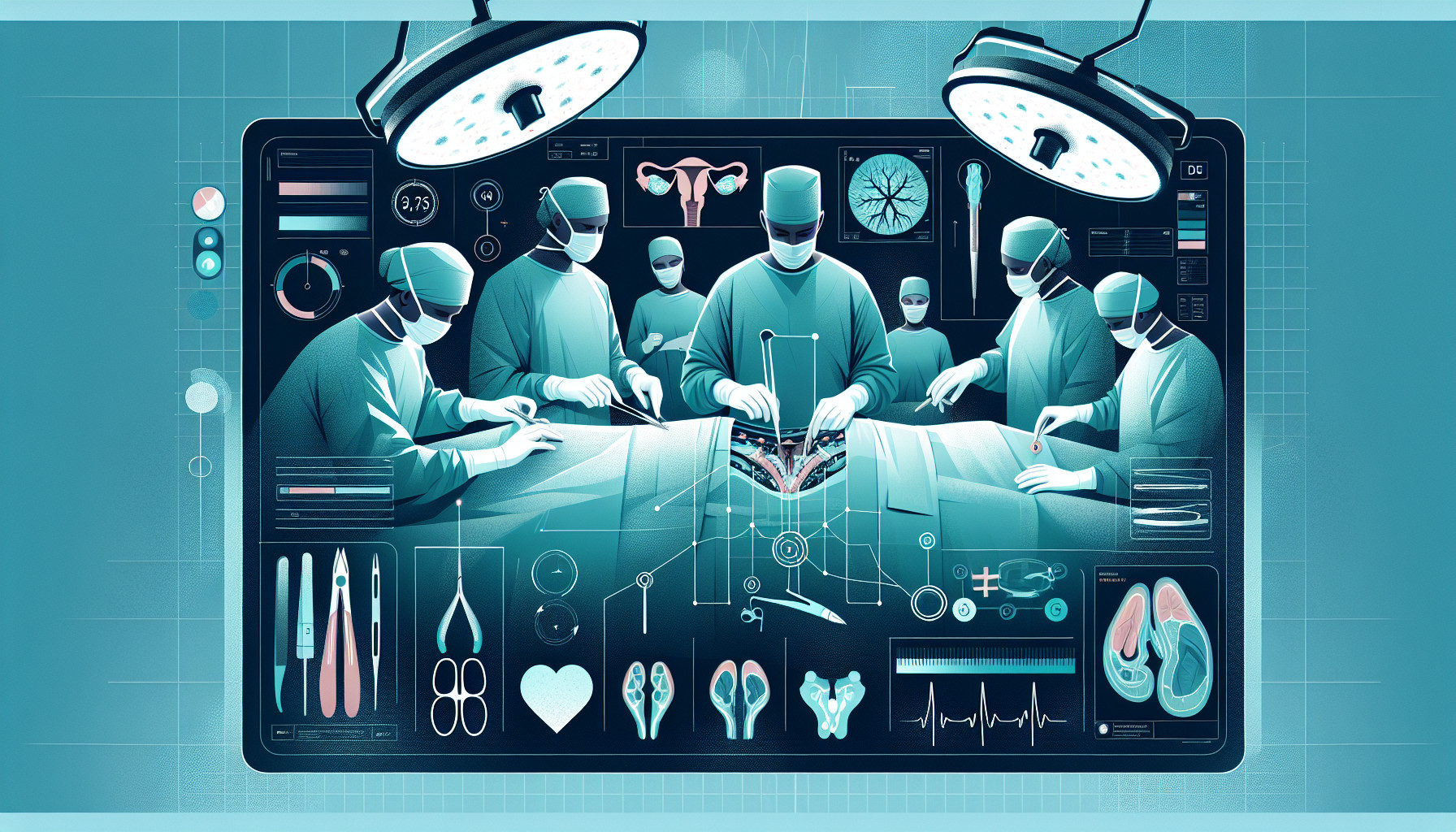Our Summary
This research paper looks at how male reproductive surgery has evolved over the years due to technological advancements in the operating room and laboratory. The introduction of the operating microscope transformed the field by allowing for precise treatment of male infertility. The use of microsurgical approaches has led to the emergence of highly specialized surgeons in this field.
The development and progression of in vitro fertilization (IVF) and intracytoplasmic sperm injection greatly changed the field of male reproductive surgery. The fact that fertilization and pregnancy could be achieved with just a single sperm changed the surgical approach to many conditions, including blockages and non-blockages. This led to the development of a procedure known as microdissection testicular sperm extraction for treating nonobstructive azoospermia (a condition where a man has no sperm in his ejaculate).
The paper also discusses the latest advancements in treating four conditions: varicocele (enlarged veins in the scrotum), blockage of the excurrent ductal system (the tubes that carry sperm), ejaculatory duct obstruction and nonobstructive azoospermia. It ends by looking forward to future developments in this field.
FAQs
- How has the introduction of the operating microscope impacted male reproductive surgery?
- What role has the development of in vitro fertilization and intracytoplasmic sperm injection played in changing the field of male reproductive surgery?
- What is microdissection testicular sperm extraction and in which condition is it used?
Doctor’s Tip
One helpful tip a doctor might tell a patient about testicular surgery is to follow all pre-operative instructions carefully, including fasting before surgery and stopping certain medications as directed. It is also important to discuss any concerns or questions with your surgeon before the procedure to ensure you are well-informed and prepared. After surgery, following post-operative care instructions, such as taking prescribed medications, avoiding heavy lifting, and keeping the surgical area clean and dry, can help promote proper healing and reduce the risk of complications. Additionally, attending all follow-up appointments and communicating any unusual symptoms or concerns with your healthcare provider is essential for monitoring your recovery progress.
Suitable For
Patients who are typically recommended testicular surgery include those with:
Varicocele: Varicocele is a common cause of male infertility, characterized by enlarged veins in the scrotum. Surgery to repair the varicocele can improve sperm count and motility, leading to increased chances of natural conception.
Blockage of the excurrent ductal system: Blockages in the tubes that carry sperm can prevent the sperm from reaching the ejaculate. Surgery to remove the blockage can restore fertility in these patients.
Ejaculatory duct obstruction: This condition can lead to infertility due to the inability of sperm to be ejaculated. Surgery to repair the obstruction can help these patients achieve pregnancy.
Nonobstructive azoospermia: In cases where a man has no sperm in his ejaculate due to a nonobstructive cause, such as a hormonal imbalance or testicular failure, surgery such as microdissection testicular sperm extraction may be recommended to retrieve sperm directly from the testicle for use in IVF.
Overall, testicular surgery is typically recommended for patients with male infertility issues that cannot be resolved through other means, such as medication or lifestyle changes. It is important for patients to consult with a specialist in male reproductive surgery to determine the best course of treatment for their specific condition.
Timeline
Before testicular surgery, a patient typically experiences symptoms such as pain, swelling, or a lump in the scrotum. They may undergo various diagnostic tests such as ultrasound, blood tests, and physical examination to determine the cause of their symptoms. After a diagnosis is made, the patient may undergo counseling to understand the risks and benefits of surgery.
During the surgery, the patient will be under general anesthesia and the surgeon will make an incision in the scrotum to access the testicle. The specific procedure will depend on the condition being treated, such as varicocele repair, vasectomy reversal, or testicular tumor removal. After the surgery, the patient will be monitored in the recovery room before being discharged home with instructions for post-operative care.
After testicular surgery, the patient may experience pain, swelling, and bruising in the scrotum. They will be advised to rest and avoid heavy lifting or strenuous activity for a period of time. Follow-up appointments will be scheduled to monitor healing and assess any complications. Depending on the type of surgery, the patient may also be advised on fertility preservation options if needed. Overall, the goal of testicular surgery is to improve symptoms, restore fertility, and ensure the health and well-being of the patient.
What to Ask Your Doctor
Some questions a patient should ask their doctor about testicular surgery include:
- What are the risks and potential complications associated with the surgery?
- What is the success rate of the surgery for my specific condition?
- What is the recovery process like, and how long will it take?
- Will the surgery affect my fertility or sexual function?
- Are there alternative treatments available for my condition?
- How experienced is the surgeon in performing this type of surgery?
- Will I need any additional tests or procedures before the surgery?
- What type of anesthesia will be used during the surgery?
- How long will I need to stay in the hospital after the surgery?
- What can I expect in terms of follow-up care and post-operative appointments?
It is important for patients to have a thorough understanding of the surgery they are undergoing and to feel comfortable asking their doctor any questions they may have.
Reference
Authors: Halpern JA, Brannigan RE, Schlegel PN. Journal: Fertil Steril. 2019 Sep;112(3):426-437. doi: 10.1016/j.fertnstert.2019.06.022. PMID: 31446902
